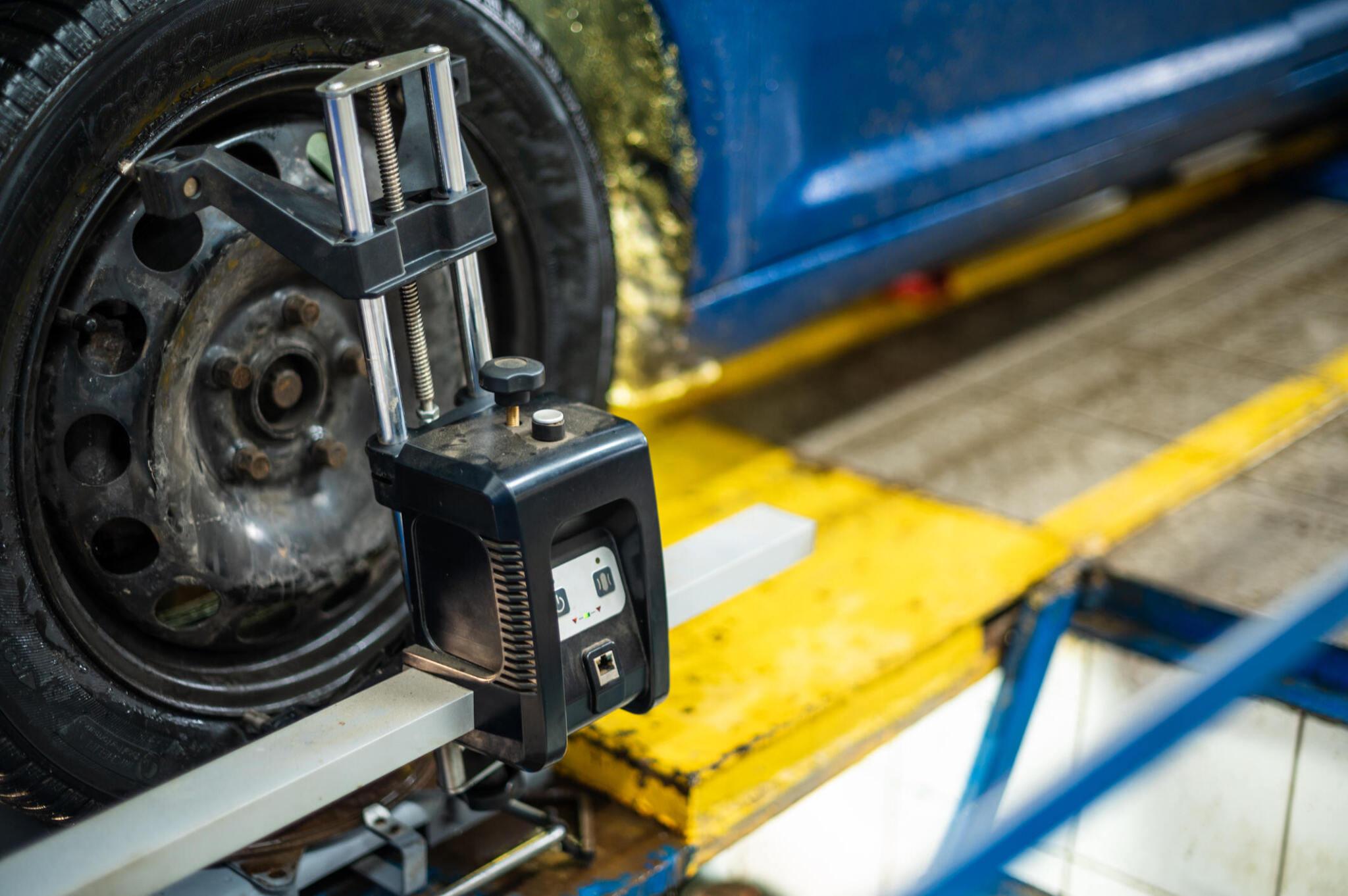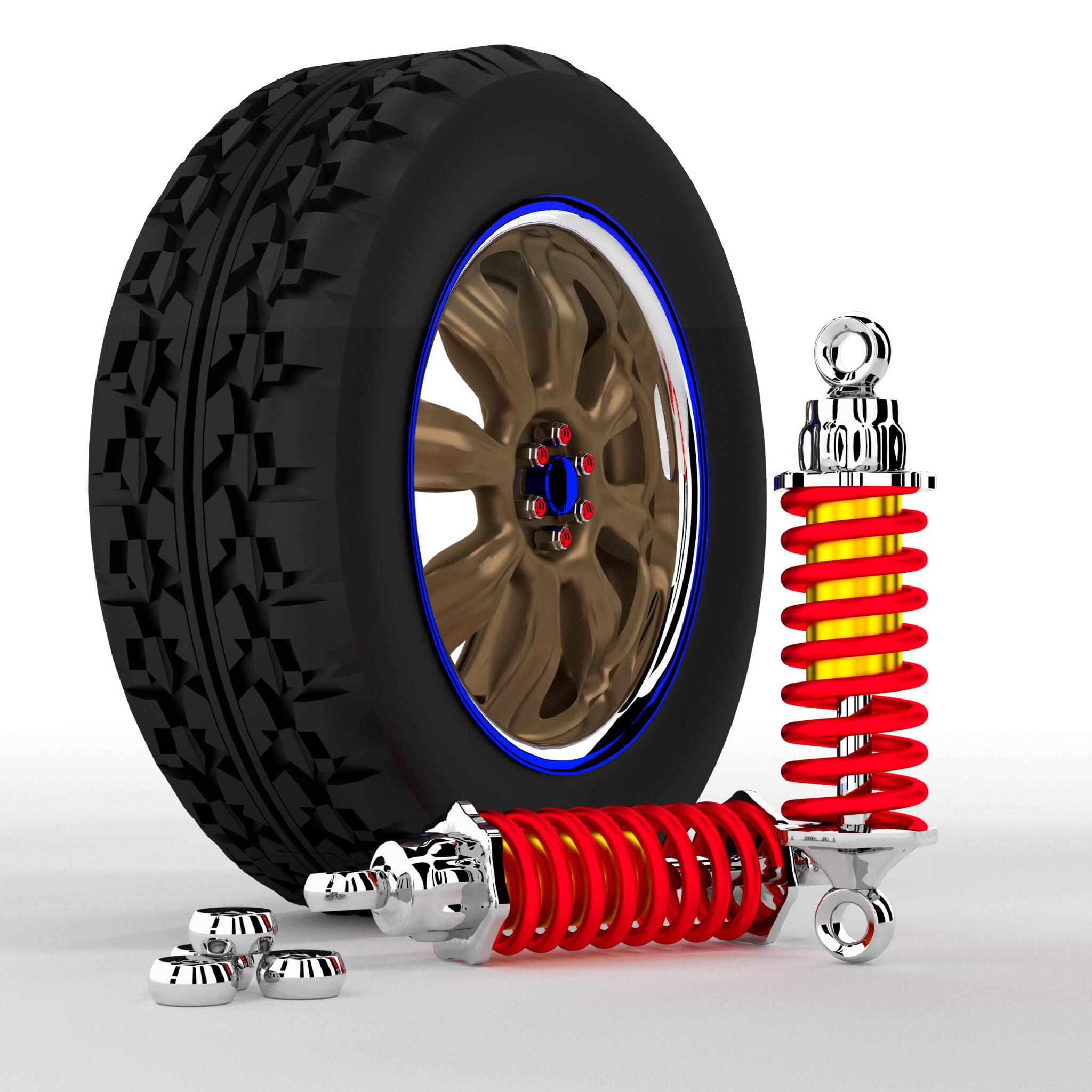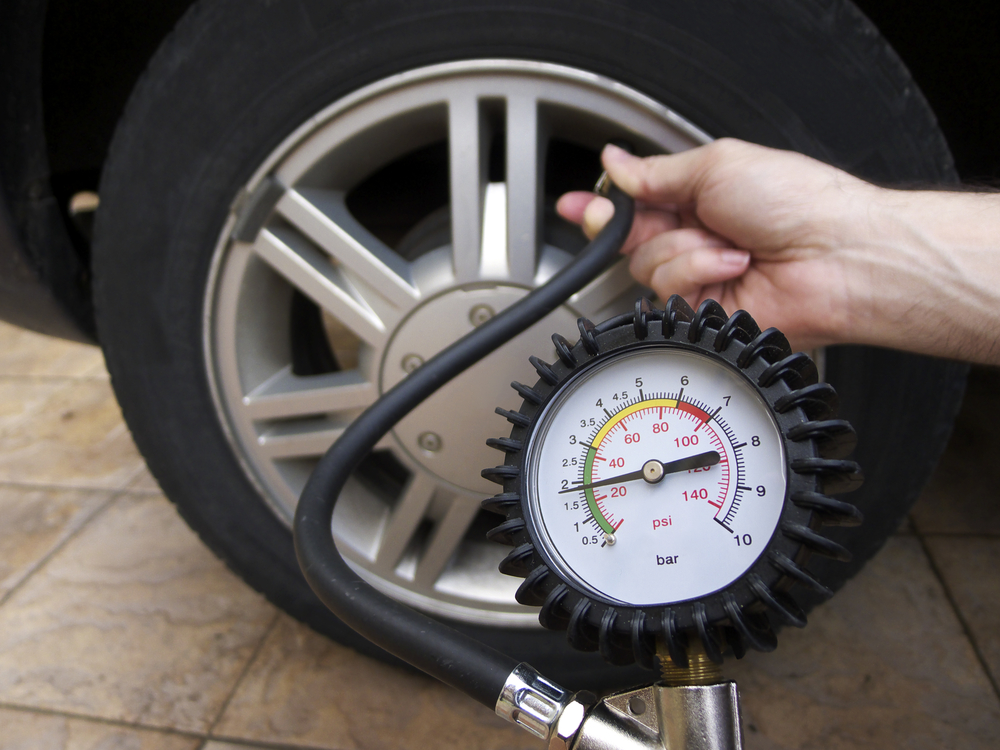Last Updated on August 9, 2025
Wheel Alignment: Essential or Excess? Understanding the Value
For many car owners, the crucial components of wheel alignment and tire installation are frequently unclear subjects. In this introduction, we hope to clarify the goals of this blog and lay the groundwork for understanding these critical automotive services.
Understanding Tire Installation and Wheel Alignment
There is more to installing tires than just swapping your old ones for new ones. A few essential measures are involved in guaranteeing that the tires are correctly mounted, balanced, and fitted to your car. This procedure consists of:
- Removal of the Old Tires: After removing the old tires from your car, technicians check them for wear patterns that could point to problems with the suspension or alignment.
- Installing and Leveling New Tires: After that, the tires are mounted, and the wheels are leveled. Balancing is necessary for a smooth ride and to avoid vibrations.
- Checking and Modifying Tire Pressure: The correct tire pressure is essential for optimum performance and fuel economy. Experts examine and modify the pressure in compliance with the manufacturer’s guidelines.
Wheel Alignment:
On the other hand, wheel alignment involves adjusting the wheels’ angles so that they are set to the car manufacturer’s specifications. The primary purposes of wheel alignment are:
- Improving Vehicle Safety: Enhancing Auto Safety: Accurate alignment guarantees that the car moves straight ahead (without “pulling” to one side).
- Extending Tire Lifespan: Improper wheel alignment can cause uneven tire wear, which shortens tire life.
- Providing a Smooth Driving Experience: An adequately aligned vehicle offers a smoother ride by reducing steering and tracking issues.
This blog serves as a comprehensive guide, aiming to demystify the processes of tire installation and wheel alignment. Whether you are a new driver or a seasoned vehicle owner, this blog is designed to equip you with the knowledge and tools to ensure your vehicle remains safe, efficient, and enjoyable.
Basics of Tire Installation
Knowing the basic steps of tire installation is essential for all car owners. Despite its apparent simplicity, several crucial phases and parts guarantee your tires’ longevity, performance, and safety.

This article delves into what happens during tire installation and the essential components to consider.
1. Tire Selection:
The process begins even before the old tires are removed. Choosing the right tire depends on the type of Vehicle, the driving environment, and the desired performance. This requires considering seasonality (summer, winter, and all-season tires) and tread design.
2. Removing Old Tires:
The first thing technicians do is carefully raise the car and remove the wheels. After that, the old tires are gently removed from the rims. During this process, the old tires are frequently examined for wear patterns that may point to alignment or suspension problems.
3. Inspecting and Preparing the Wheels:
Before mounting new tires, the wheels must be inspected. This includes checking for damage, corrosion, or deformities. The wheel is then cleaned to ensure a proper seal with the new tire.
4. Mounting New Tires:
The fresh tires are then mounted to the wheels. This requires accuracy to ensure that the tire is seated correctly on the wheel and that the bead (the tire’s edge on the rim) is securely attached.
5. Inflating and Balancing Tires:
After installation, the tires are inflated to the pressure the vehicle manufacturer prescribes. Then comes the essential step of leveling the tires. This entails placing small weights on the wheel to ensure the tire rotates without producing vibrations, which can result in uneven wear and a less comfortable ride.
6. Installing Wheels on the Vehicle:
After installation, the tires are inflated to the pressure the vehicle manufacturer prescribes. Then comes the essential step of leveling the tires. This entails placing small weights on the wheel to ensure the tire rotates without producing vibrations, which can result in uneven wear and a less comfortable ride.
Key Components to Consider
Tire installation is more than just changing damaged tires; it is a multi-step operation that includes several essential factors. These include selecting the appropriate tire type and quality, ensuring the correctness of the tire pressure monitoring system, checking wheel alignment, considering seasonal needs, and comprehending warranty and aftercare services. This article looks into these critical components to assist car owners in making informed vehicle performance and safety decisions.
1. Tire Type and Quality:
Selecting a tire appropriate for your Vehicle and its driving patterns is critical. The quality of the tire influences handling, fuel efficiency, and safety.
2. Tire Pressure Monitoring System (TPMS):
Many modern vehicles come equipped with TPMS. This device must be reset or calibrated during tire installation to ensure correct tire pressure readings.
3. Wheel Alignment Check:
When installing new tires, make sure the wheel alignment is correct. Proper alignment provides even tire wear, improved handling, and higher fuel efficiency.
4. Seasonal Considerations:
For individuals who live in places with significant seasonal weather variations, timing the transition to winter or all-season tires is critical for best performance and safety.
5. Warranty and Aftercare:
Understand the warranty on your new tires and any aftercare services provided by the installation center. This may include free rotations, balancing, and pressure checks.
Tire installation is a multifaceted process beyond replacing old tires with new ones. It requires careful consideration of various components and steps to ensure your Vehicle performs at its best and remains safe on the road. Understanding these basics empowers vehicle owners to make informed decisions and maintain their vehicles effectively.
The Role of Wheel Alignment
Wheel alignment is an essential part of vehicle maintenance that is often overlooked until a problem arises. Understanding wheel alignment and identifying the signals your car requires is critical to providing a smooth, safe driving experience and increasing the life of your tires.
Defining Wheel Alignment
Wheel alignment, often known as tire alignment, changes the angles between the wheels and the Vehicle’s body or frame. The three central alignment angles are camber, caster, and toe.
- Camber is the inward or outward angle of the tire as viewed from the front of the Vehicle. Too much inward or outward tilt or damaging or optimistic camber, shows poor alignment and can result in unequal tire wear.
- Caster: This angle, viewed from the side of the Vehicle, includes the steering axis. It impacts steering stability and cornering. A positive or negative caster angle can impact steering feel and stability.
- Toe: Refers to how much your tires turn inward or outward when viewed from above. Improper toe alignment can result in quick tire wear.
Proper wheel alignment ensures that the tires meet the road at the correct angle, the Vehicle travels straight, and the tires wear evenly. It’s a complex process that a skilled technician should perform.
Signs Your Vehicle Needs Alignment
Recognizing when your Vehicle needs a wheel alignment can prevent numerous problems. Here are some common signs:
- Uneven Tire Wear: Uneven tire wear is one of the most noticeable indications. If your tires are wearing unevenly or faster than usual, they are most likely out of alignment.
- Vehicle Pulling to One Side: If your Vehicle consistently pulls to one side or the other while driving, it could be due to mismatched wheels. This can happen even if the steering wheel appears straight.
- Steering Wheel Off-Center: If you are going straight and your steering wheel isn’t centered or inclined to one side, it’s an obvious sign that your Vehicle’s alignment is incorrect.
- Vibrations in the steering wheel: While various faults can cause these, they can also indicate misalignment.
- Squealing Tires: Unusual tire noises, like squealing when turning corners, can indicate alignment issues.
- Handling Issues: If your Vehicle does not handle as it used to, especially around corners or when making maneuvers, it could be due to misalignment.
Proper wheel alignment is not just about preventing tire wear; it’s about ensuring optimal vehicle handling and safety. Regular checks are advisable, especially after hitting a significant pothole, getting new tires, or noticing any signs mentioned. A well-aligned vehicle provides a smoother ride, more efficient fuel consumption, and a safer driving experience. Regular maintenance is a small investment that prevents costly repairs and keeps your Vehicle running efficiently.
The Impact of Misalignment
Wheel alignment is a critical aspect of car maintenance that, if neglected, can profoundly affect vehicle performance and lead to long-term consequences for your car. Understanding these impacts helps car owners appreciate the importance of regular alignment checks.
1. Reduced Fuel Efficiency:
Proper wheel alignment helps maintain ideal fuel consumption. Misaligned wheels can increase rolling resistance because the tires do not move straight, forcing the engine to work harder and reducing fuel economy.
2. Poor Handling and Steering:
A misaligned vehicle may not respond accurately to steering inputs, resulting in poor handling. This can be particularly noticeable while making turns or maneuvering, as the car might not react as expected, which can be dangerous in certain driving conditions.
3. Increased Tire Wear:
One of the most noticeable consequences of misalignment is uneven tire wear. Tires that need to be correctly aligned tend to wear unevenly and quickly. This shortens the tire life, necessitating frequent replacements, and can severely impact the Vehicle’s traction and safety.
4. Vibrations and Ride Discomfort:
Misalignment can produce vibrations in the car, which are commonly sensed through the steering wheel. These vibrations make for an uncomfortable ride and might cause additional stress on car components.
Long-term Consequences for Your Car
Neglecting wheel alignment can have serious long-term consequences for your Vehicle, such as damage to suspension and steering components, increased driving safety risks, reduced resale value due to wear and alignment issues, and a larger environmental footprint due to increased fuel consumption and tire waste. Regular alignment inspections are essential for preserving your Vehicle’s performance, safety, and value.
1. Damage to Suspension and Steering Components:
Driving on mismatched wheels stresses several automotive components, including the suspension and steering systems. Over time, this strain can cause premature wear and failure of these components, resulting in expensive repairs.
2. Safety Risks:
A misaligned car might endanger driver safety. Poor handling, longer stopping distances, and erratic steering enhance the chance of an accident, especially in hazardous driving circumstances.
3. Impact on Resale Value:
Driving a misaligned vehicle over time might impact its resale value. A history of uneven tire wear, suspension troubles, and other alignment concerns can reduce a vehicle’s market value.
4. Environmental Impact:
Misaligned tires lead to higher fuel consumption and frequent tire repairs, leaving a more significant environmental imprint. Proper alignment is suitable for both your car and the environment.
Wheel misalignment is not something to take lightly. It influences the Vehicle’s performance, safety, and lifetime. Regular alignment checks are an essential element of vehicle maintenance that can save you money, improve safety, and extend the life of your car. Car owners should be aware of the indicators of misalignment and get their vehicles regularly checked and fixed by a professional whenever any symptoms of misalignment are discovered.
Wheel Alignment and New Tires
The relationship between new tires and wheel alignment is pivotal regarding vehicle maintenance. This chapter explores why aligning your wheels when you get new tires is essential and what experts and industry standards say about this practice.

Why Align With New Tires?
Aligning your Vehicle while installing new tires is critical to ensuring even tire wear, maintaining ideal handling and fuel efficiency, and protecting your new tire investment. It will eventually increase the tires’ lifespan and improve overall driving safety.
1. Ensuring Even Tire Wear:
One key reason for aligning your wheels when installing new tires is to promote even tire wear. New tires are an investment, and proper alignment protects that investment. Misaligned wheels can cause uneven and rapid tire wear, so your new tires may deteriorate considerably faster than expected.
2. Optimal Vehicle Performance:
Wheel alignment is crucial to your Vehicle’s overall performance. When you install new tires, aligning them guarantees they are correctly positioned according to the Vehicle’s requirements. This alignment enhances handling, provides a smoother ride, and increases fuel efficiency.
3. Safety:
The condition and alignment of your tires significantly impact your Vehicle’s safety. Correctly matched tires increase vehicle stability and steering while providing improved road contact. Especially with new tires, you want to ensure they work optimally to protect your safety on the road.
4. Preventing Future Issues:
Having your wheels aligned when you install new tires can also help diagnose and avoid potential vehicle problems. The alignment process includes a complete inspection of the suspension and steering systems, which may detect issues before they become more problematic.
Expert Opinions and Industry Standards
Aligning your Vehicle while installing new tires is critical to ensuring even tire wear, maintaining ideal handling and fuel efficiency, and protecting your new tire investment. It will eventually increase the tires’ lifespan and improve overall driving safety.
Expert Opinions:
Most automotive professionals agree that wheel alignment should be checked while replacing tires. They say it is essential to consider the Vehicle’s long-term health and performance and the immediate benefits. Experts frequently point out that the cost of alignment is minimal compared to the cost of changing tires early due to uneven wear.
Industry Standards:
Many tire manufacturers and automobile service providers recommend a wheel alignment when installing new tires. This guideline is frequently found in the maintenance schedules of numerous car manufacturers. Aligning new tires is a standard practice in the automotive industry for optimum performance and longevity.
Alignment Technology Advancements:
Alignment technology has advanced, making precise alignment more efficient and accurate. Modern alignment systems may provide thorough readings and modifications, ensuring your new tires perfectly align with your Vehicle’s requirements.
When installing new tires on your vehicle, always align the wheels. This guarantees that your new tires operate optimally, are safe, and last long. By following expert guidance and industry standards, you can keep your Vehicle in good condition and avoid future costly troubles. It is a minimal investment in your car’s overall maintenance and performance.
Cost Considerations
In vehicle maintenance, wheel alignment is often viewed through the lens of cost. This chapter is dedicated to analyzing the costs associated with wheel alignment and conducting a cost-benefit analysis to understand its value.
Analyzing the Costs of Wheel Alignment
When calculating wheel alignment expenses, the immediate expense is weighed against the long-term benefits of reduced tire wear, increased fuel efficiency, and superior handling. Regular alignment checks can help to avoid costly repairs and increase the life of your tires, resulting in significant savings over time.
1. Standard Costs of Alignment Services:
Wheel alignment costs vary depending on location, vehicle type, and quality of work (two-wheel versus four-wheel alignment). A typical two-wheel alignment costs between $50 to $100, with a four-wheel alignment costing significantly more. Luxury or performance automobiles may have higher prices due to more complicated suspension systems and alignment needs.
2. Factors Influencing Cost:
Several factors can influence the cost of a wheel alignment:
- Type of Vehicle: Larger or all-wheel-drive vehicles may cost more to align due to their complicated suspension systems.
- Misalignment Severity: If your Vehicle’s alignment is severely out of specification, aligning it may take more time and effort, raising the cost.
- Regional Labor Rates: Labor expenses vary by location, which might affect the service’s total cost.
- Additional Repairs: Alignment concerns can indicate additional suspension issues. If more repairs are required, the cost will increase.
3. Price vs. Quality:
While it may be tempting to select the lowest provider, it is critical to examine the quality of the work. A poor alignment might lead to other issues. Therefore, it’s worth investing in a competent service provider.
Cost-Benefit Analysis
A cost-benefit study of wheel alignment finds that, while there is an initial expense, the long-term savings in fuel efficiency, tire longevity, fewer costly repairs, safety improvements, and environmental benefits make it a wise investment. Regular alignment is critical to car maintenance since it improves the Vehicle’s general health, performance, and value.
1. Immediate Benefits:
The immediate benefits of wheel alignment include improved handling, increased fuel efficiency, and better tire performance. These benefits can lead to direct cost savings, such as reduced fuel consumption and extended tire life.
2. Long-Term Savings:
In the long term, regular wheel alignments can prevent more expensive repairs. Misalignment can cause premature wear and tear on tires, suspension, and steering components. Proper alignment is essential to reducing the likelihood of these costly repairs.
3. Safety and Value:
There is also a safety concern to consider. Adequately aligned wheels contribute to safer driving circumstances, which is quite beneficial. Maintaining your Vehicle, including annual alignments, can assist in preserving its resale value.
4. Environmental Impact:
Proper alignment provides environmental benefits. Efficient fuel use and decreased tire waste lead to a lower ecological footprint.
While the initial cost of wheel alignment may appear to be an additional expense, the long-term savings, safety benefits, and performance improvements outweigh it. Regular wheel alignment is vital for car maintenance as it lowers overall costs, improves safety, and improves vehicle performance. It is a smaller Vehicle’s long-term health.
The case is a little investment study.
Real-life case studies provide essential information on the practical implications of wheel alignment. This chapter examines real-life circumstances and the lessons acquired from them.
Real-Life Scenarios
These case studies demonstrate real-world scenarios of wheel alignment impact: disregarding regular alignments leads to uneven tire wear and handling concerns; timely alignment improves fuel efficiency, balancing the service cost; Ignoring alignment issues leads to costly suspension repairs, stressing the significance of frequent wheel alignment checks for vehicle maintenance and cost savings.
Case Study 1: Uneven Tire Wear
In this scenario, a car owner failed to maintain routine wheel alignments. As a result, the tires’ wear patterns were uneven, with the front tires wearing down far faster than the rear. The motorist reported decreased handling performance and increased road noise. Following a professional alignment, the tires were changed, and successive adjustments avoided additional uneven wear.
Case Study 2: Improved Fuel Efficiency
In this case, a driver decided to invest in a wheel alignment after noticing their Vehicle’s fuel efficiency dropping. The alignment corrected the misalignment issues, resulting in improved fuel economy. Over time, the savings on fuel costs exceeded the expense of the alignment service.
Case Study 3: Costly Suspension Repairs
A vehicle owner experienced excessive vibrations and steering problems. Ignoring these issues led to severe suspension damage, including bent control arms and damaged tie rods. The following alignment check revealed significant misalignment, contributing to the suspension problems. The cost of repairs far exceeded the cost of regular alignments.
Lessons Learned from Experience
These case studies distill valuable lessons: preventative maintenance, such as regular wheel alignments, prevents costly issues and enhances vehicle performance; prioritizing safety with proper alignment reduces accident risks; aligning with new tires maximizes their lifespan and performance; consistent maintenance pays off in long-term savings and safety; and seeking professional services ensures precision and expertise in alignment, which is critical for optimal vehicle care and
Lesson 1: Prevention is Key
The case examples emphasize the value of preventative maintenance. Neglecting wheel alignment can result in expensive repairs and poor vehicle performance. Regular alignment checks can help prevent such problems and save money in the long term.
Lesson 2: Safety First
Safety should be the first focus. Misaligned wheels can impair vehicle handling and stability, increasing the likelihood of an accident. Proper alignment saves money and ensures your safety on the road.
Lesson 3: Align with New Tires
Aligning your wheels after installing new tires is a wise decision. It guarantees that your new tires operate optimally and last as long as possible. The savings from tire replacements frequently outweigh the initial cost of alignment.
Real-life case studies demonstrate the impact of wheel alignment on vehicle performance, safety, and costs. These instances highlight the significance of preventative maintenance, getting new tires, and obtaining professional help. Learning from these experiences can help car owners make more educated decisions to keep their vehicles functioning smoothly and efficiently.
Making the Decision
Car owners must make the critical decision to invest in wheel alignment. In this chapter, we will examine the elements to consider before making that selection and summarize the benefits and drawbacks of wheel alignment.
Factors to Consider Before Deciding
Before deciding on wheel alignment, consider your vehicle type and usage, especially if it is a more significant or all-wheel drive vehicle, assess your regular driving conditions for potential misalignment causes, monitor tire wear patterns for uneven wear, be aware of any vehicle handling issues, follow manufacturer recommendations for maintenance, and conduct a cost analysis to weigh the immediate cost of alignment against long-term savings in fuel, tire longevity, and reduced repair expenses.
1. Vehicle Type and Usage:
Consider the type of Vehicle you own and how you use it. Larger cars with all-wheel drive or those used for towing may require more frequent alignments due to their complex suspension systems and heavier loads.
2. Driving Conditions:
Think about the driving conditions you encounter regularly. Rough or pothole-ridden roads can lead to misalignment, and more frequent alignments may be necessary if you frequently drive on such roads.
3. Tire Wear Patterns:
Pay attention to your tire wear patterns. Uneven wear, such as one side of the tire wearing faster than the other, is a clear sign of misalignment. If you notice this, it’s time for an alignment.
4. Vehicle Handling:
If you experience issues with vehicle handling, such as drifting to one side or steering problems, these could indicate misalignment. Addressing these issues promptly is essential for safety.
5. Manufacturer Recommendations:
Check the Vehicle’s manufacturer recommendations. Some automakers include alignment checks as part of their regular maintenance schedules. Following these guidelines can help you make an informed decision.
6. Cost Analysis:
Consider the cost of wheel alignment and potential savings. While alignments come with a price tag, the benefits of improved fuel efficiency, tire longevity, and reduced repair costs can outweigh the expense.
Pros and Cons:
Wheel alignment benefits include excellent handling and safety, longer tire life, increased fuel efficiency, proper preventative maintenance, and higher resale value. On the downside, it requires an initial investment, different frequencies based on specific parameters, limitations of DIY approaches, and reliance on the technician’s competence. Despite these drawbacks, the numerous benefits make wheel alignment an essential and worthy investment in vehicle maintenance and overall performance.
Pros of Wheel Alignment:
- Improved Handling: Proper alignment improves vehicle handling, making it more responsive and controllable.
- Safety: Aligned wheels improve stability and steering, making driving safer.
- Extended Tire Life: Wheel alignment avoids uneven tire wear, extending your tires’ life.
- Fuel Efficiency: Proper alignment minimizes rolling resistance, which improves fuel efficiency.
- Preventative Maintenance: Regular alignments help detect and avoid costly suspension and steering issues.
- Maintenance: Well-maintained vehicles with appropriate alignment typically have greater resale values.
Cons of Wheel Alignment:
- Initial Cost: There is an upfront cost associated with wheel alignment services.
- Frequency: The frequency of alignments can vary depending on driving conditions and vehicle type.
- DIY Limitations: While DIY alignment kits exist, they may need to provide the accuracy and expertise of professional services.
- Alignment Technician Quality: The effectiveness of an alignment largely depends on the skill and experience of the technician.

Conclusion & Recommendations
After reading this comprehensive guide on tire installation and wheel alignment, here is a summary of the key points and final recommendations. This information will help you make informed decisions about your vehicle maintenance.
Recap of Key Points
This overview covers the essentials of tire installation and the critical role of wheel alignment, emphasizing its importance in ensuring even tire wear, optimal vehicle performance, and safety. We explored the cost-effectiveness of alignment, real-life case studies underscoring its impact, and factors to consider in decision-making, concluding that the benefits of regular wheel alignment, such as improved safety, vehicle handling, and long-term cost savings, significantly outweigh any initial costs or challenges.
Understanding Tire Installation:
- Tire installation involves mounting new tires onto your Vehicle’s wheels.
- It involves careful inspection, proper balancing, and ensuring the tires are correctly seated on the rims.
The Role of Wheel Alignment:
- Wheel alignment involves adjusting the angles of the Vehicle’s wheels to ensure they are parallel to each other and perpendicular to the ground.
- Proper alignment enhances vehicle handling, safety, and tire longevity.
Alignment with New Tires:
- Aligning your wheels when installing new tires is crucial to ensure even wear, optimal performance, and safety.
- It is a cost-effective practice that extends the life of both tires and the Vehicle.
Analyzing the Costs:
- The wheel alignment cost varies, but it is a small investment compared to the long-term savings and benefits.
- Proper alignment can prevent costly repairs, improve fuel efficiency, and enhance safety.
Real-Life Case Studies:
- Real-life scenarios highlight the impact of wheel alignment on tire wear, vehicle performance, and repair costs.
- These cases emphasize the importance of preventative maintenance.
Making the Decision:
- Factors like vehicle type, driving conditions, tire wear, and manufacturer recommendations should inform your decision.
- The pros of alignment, including improved handling and safety, often outweigh the cons.
Final Recommendations
Based on the information presented, here are the final recommendations:
1. Prioritize Preventative Maintenance:
Regular wheel alignment is an essential part of preventative maintenance. It can save you money in the long run by preventing costly repairs and extending tire life.
2. Align with New Tires:
Whenever you invest in new tires, make sure to align the wheels. This ensures that you get the most out of your tires in terms of performance, safety, and longevity.
3. Pay Attention to Signs:
Be vigilant about signs of misalignment, such as uneven tire wear, handling issues, and steering problems. Address these promptly to maintain safety and vehicle performance.
4. Seek Professional Services:
While DIY alignment kits exist, it is recommended that you seek professional alignment services. Skilled technicians and modern equipment provide accurate and reliable results.
5. Follow Manufacturer Recommendations:
Check your Vehicle’s maintenance schedule and follow the manufacturer’s recommendations regarding wheel alignment. It’s often an integral part of keeping your vehicle in top condition.
In conclusion, proper tire installation and wheel alignment are critical aspects of vehicle maintenance that should be considered. By following these recommendations and prioritizing alignment as part of your vehicle care routine, you can enjoy improved safety, handling, and long-term savings.
If you are ready to take action, you can buy tires from Tires Easy. They offer a wide range of high-quality tires to suit your Vehicle’s needs. Ensure your Vehicle has the best tires and properly aligned wheels for a safer and more enjoyable driving experience.
FAQs
Is a wheel alignment part of getting new tires?
Yes, aligning your wheels when getting new tires is recommended. It ensures even wear, optimal performance, and safety. It is advisable to align the wheels after installing the tires. New tires on properly matched wheels provide maximum benefits.
Do you have to pay for wheel alignment?
Yes, there is a cost associated with wheel alignment services. However, the long-term benefits often outweigh the expense.
What should be done after getting new tires?
After getting new tires, align the wheels to ensure even wear and optimal performance.
How do I know if I need a wheel alignment?
Uneven tire wear, steering problems, and vehicle drift are signs of misalignment.
Is 4-wheel alignment necessary?
Four-wheel alignment is recommended for most vehicles to ensure all wheels are correctly aligned.
Is it worthwhile to get a wheel alignment?
Wheel alignment is a worthwhile investment. It improves handling safety and saves money on tire replacements.
Are wheel alignments worth it?
Yes, wheel alignments are worth it for their long-term benefits in terms of safety, tire longevity, and vehicle performance.
Why is alignment so expensive?
The cost reflects the precision and expertise required for accurate alignment. It is a small expense compared to the savings and benefits.
What happens if I never get a wheel alignment?
Neglecting wheel alignment can lead to uneven tire wear, reduced handling, and costly suspension repairs.
-
Automotive Specialist
-
Proofreader
-
Writer









